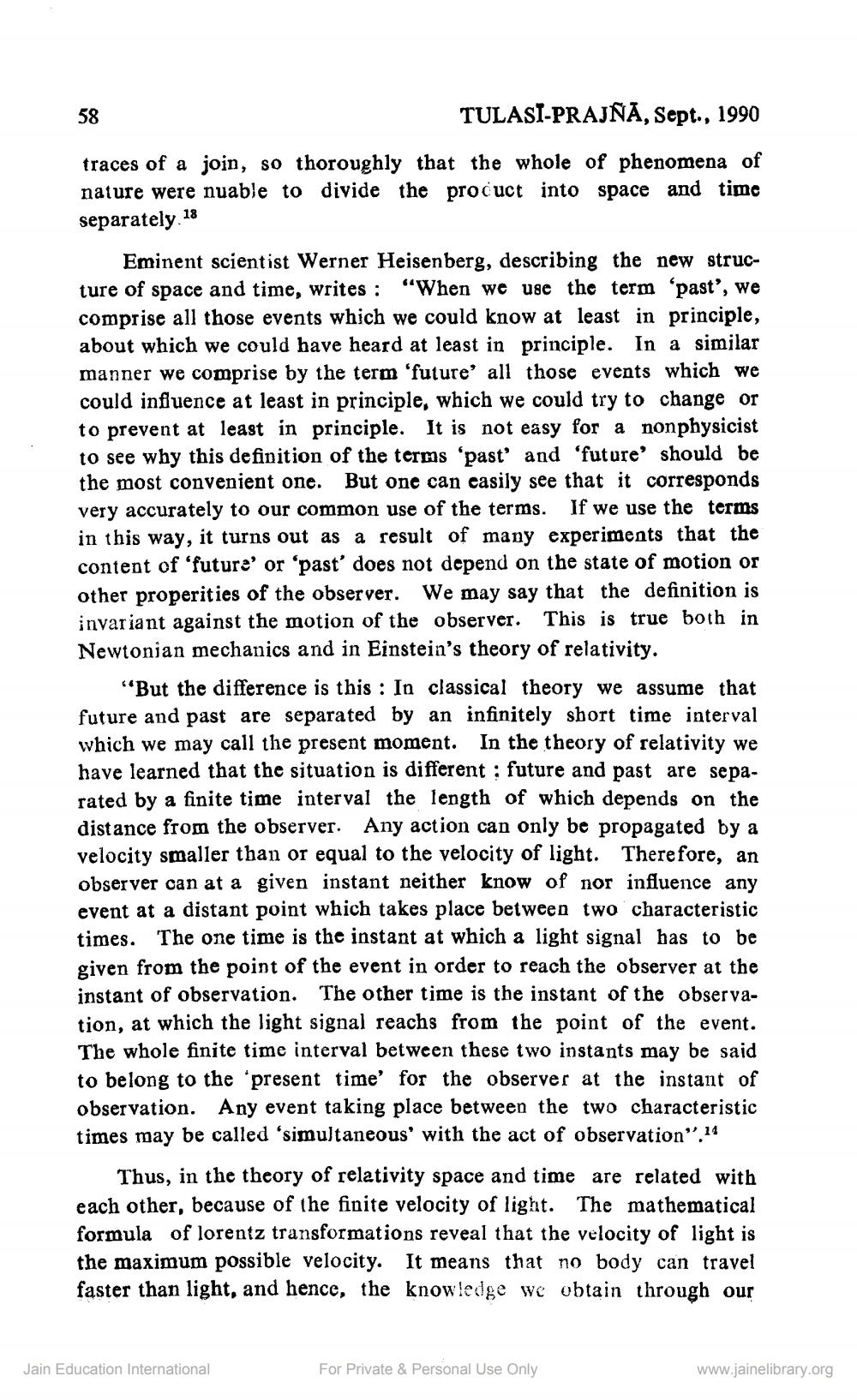________________
58
TULASI-PRAJNĀ, Sept., 1990
traces of a join, so thoroughly that the whole of phenomena of nature were nuable to divide the product into space and time separately. 18
Eminent scientist Werner Heisenberg, describing the new structure of space and time, writes : "When we use the term “past', we comprise all those events which we could know at least in principle, about which we could have heard at least in principle. In a similar manner we comprise by the term 'future' all those events which we could influence at least in principle, which we could try to change or to prevent at least in principle. It is not easy for a nonphysicist to see why this definition of the terms 'past' and 'future' should be the most convenient one. But one can easily see that it corresponds very accurately to our common use of the terms. If we use the terms in this way, it turns out as a result of many experiments that the content of 'future' or 'past' does not depend on the state of motion or other properities of the observer. We may say that the definition is invariant against the motion of the observer. This is true both in Newtonian mechanics and in Einstein's theory of relativity.
"But the difference is this : In classical theory we assume that future and past are separated by an infinitely short time interval which we may call the present moment. In the theory of relativity we have learned that the situation is different : future and past are separated by a finite time interval the length of which depends on the distance from the observer. Any action can only be propagated by a velocity smaller than or equal to the velocity of light. Therefore, an observer can at a given instant neither know of nor influence any event at a distant point which takes place between two characteristic times. The one time is the instant at which a light signal has to be given from the point of the event in order to reach the observer at the instant of observation. The other time is the instant of the observation, at which the light signal reachs from the point of the event. The whole finite time interval between these two instants may be said to belong to the present time for the observer at the instant of observation. Any event taking place between the two characteristic times may be called 'simultaneous' with the act of observation”. 14
Thus, in the theory of relativity space and time are related with each other, because of the finite velocity of light. The mathematical formula of lorentz transformations reveal that the velocity of light is the maximum possible velocity. It means that no body can travel faster than light, and hence, the knowledge we obtain through our
Jain Education International
For Private & Personal Use Only
www.jainelibrary.org




